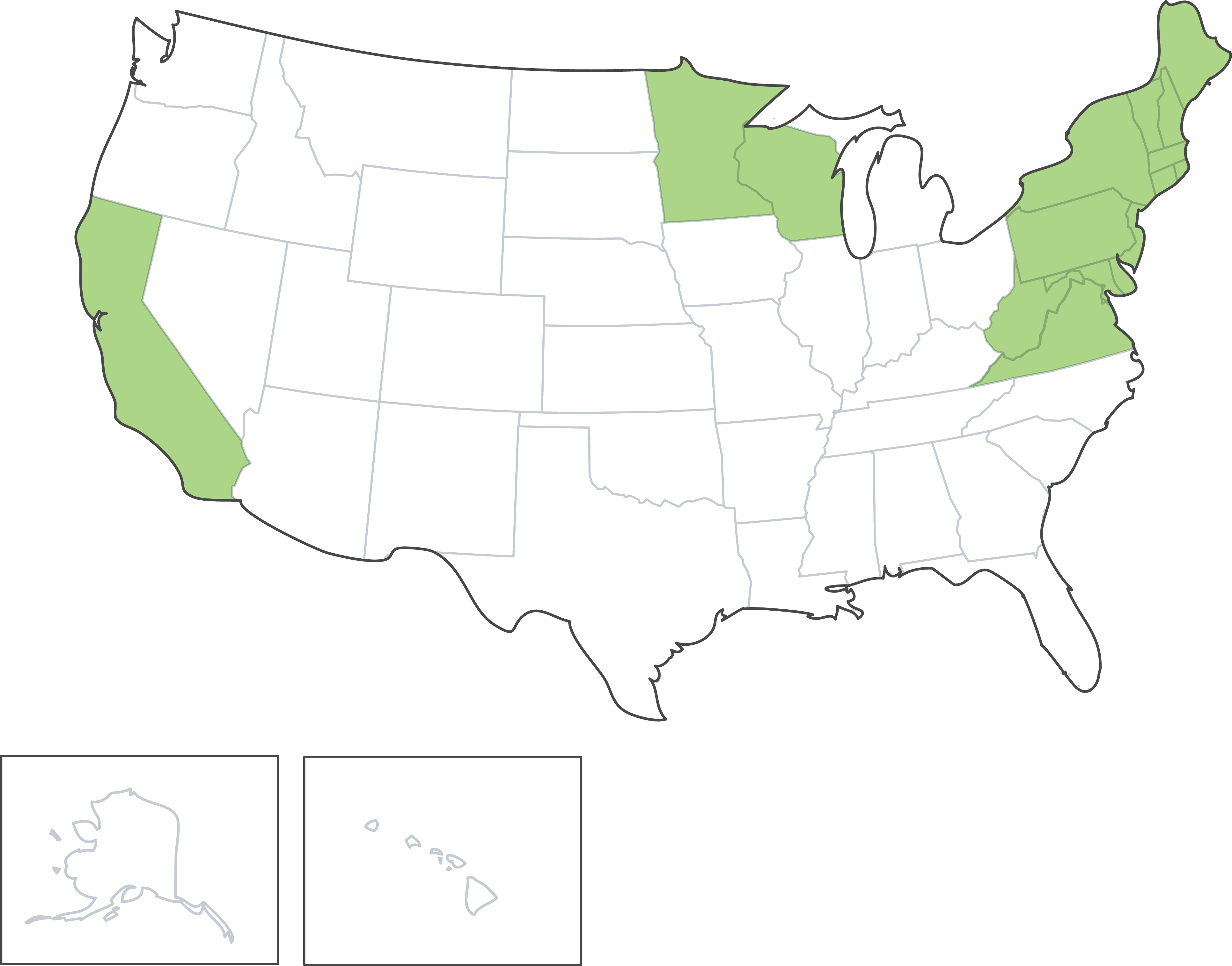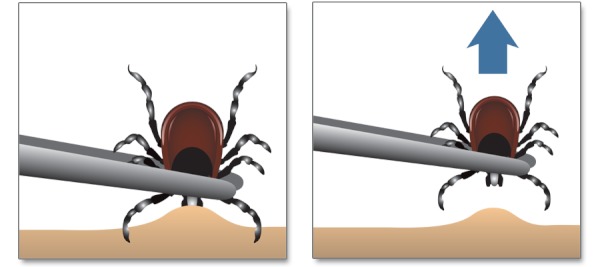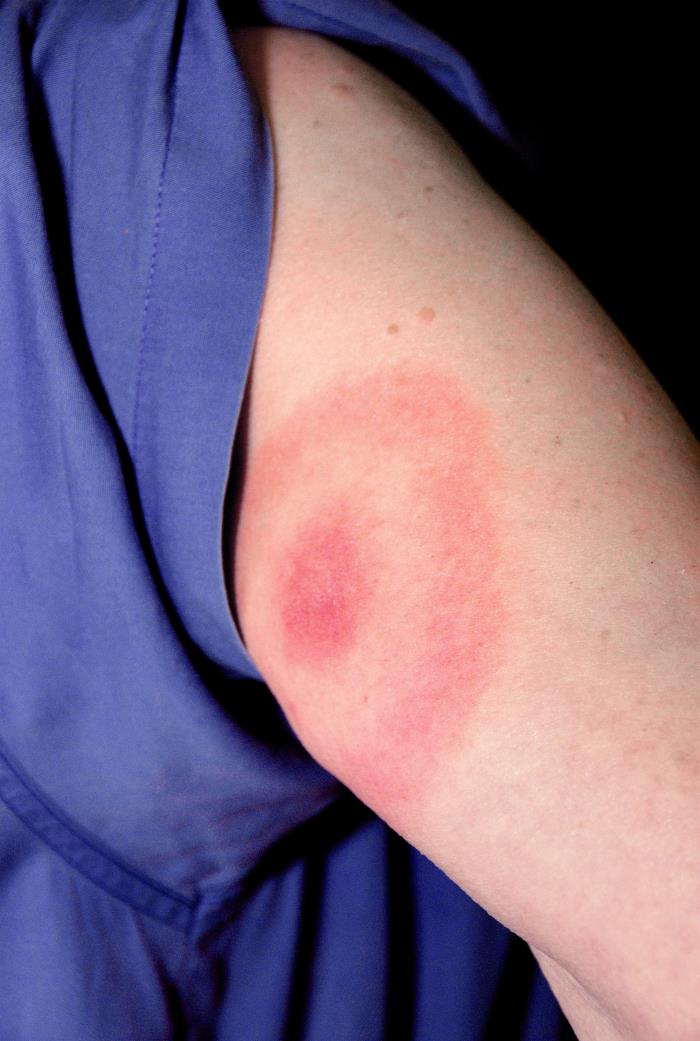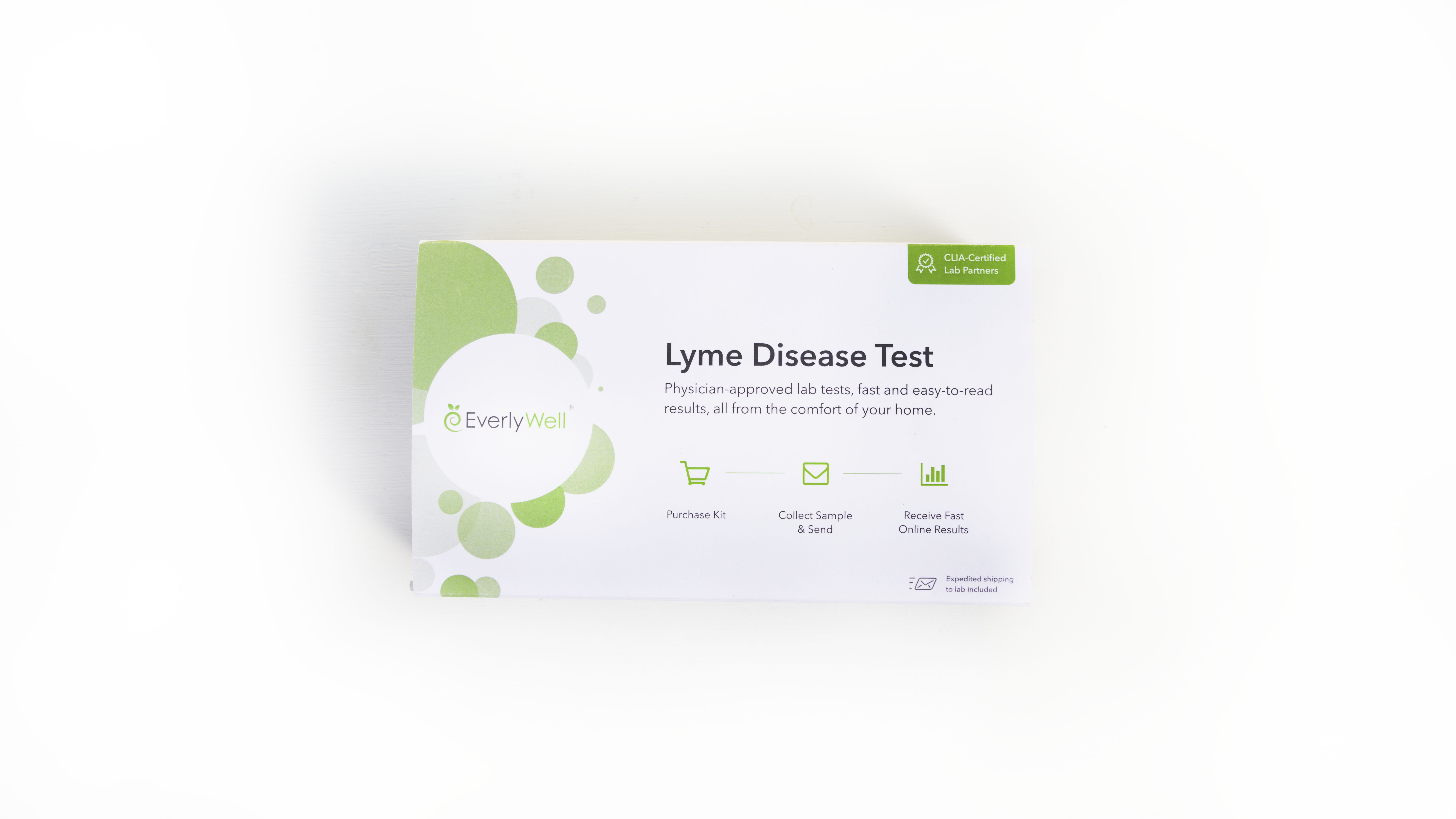
What to do if you're bitten by a tick
Table of contents
- 1. Remove the Deer Tick As Soon As Possible
- 2. Keep an Eye Out for the Bull’s-eye Rash on Your Skin
- 3. Watch for Other Symptoms of Lyme Disease – And If Necessary, Get a Blood Test
- Related content
Blacklegged ticks (Ixodes scapularis, or deer tick) can transmit Lyme disease bacteria into your bloodstream, and these bacteria are known as Borrelia burgdorferi. If Lyme disease isn’t detected or treated, you can experience serious health complications – including arthritis, mental confusion, and facial paralysis.
(Keep in mind that not all tick species can cause Lyme disease. In fact, Rocky Mountain spotted fever, another tick-borne illness, is caused by a wood tick. While both infections may result in similar symptoms, they are different diseases. Learn more about risk factors for Lyme disease.)
So what you should do if you’re bitten by a blacklegged tick in an area where Lyme disease occurs (see the map below)?
 States in green have especially large populations of ticks that carry Lyme disease bacteria.
States in green have especially large populations of ticks that carry Lyme disease bacteria.
Read on to learn what to do for a tick bite—including tick removal, tick bite treatment, what to do after a tick bite, and more. (If you’ve already been bitten and want to screen for Lyme disease, consider taking the Everlywell at-home Lyme Disease Test.)
1. Remove the Deer Tick As Soon As Possible
This probably goes without saying, but the very first thing you should do is remove the deer tick from your body as soon as possible.
Lyme disease bacteria – or Borrelia burgdorferi – live in the tick’s gut (if the tick is infected). So it takes some time for this bacterium to make its way to the tick’s mouthparts and into your bloodstream through the tick’s saliva.
 Attached tick removal is the very first step you should take to prevent a tick-borne illness like Lyme disease – using fine-tipped tweezers clasped around the tick’s head and/or tick’s mouthparts. Source: CDC.gov.
Attached tick removal is the very first step you should take to prevent a tick-borne illness like Lyme disease – using fine-tipped tweezers clasped around the tick’s head and/or tick’s mouthparts. Source: CDC.gov.
Thus, the risk of Borrelia bacteria getting into your body through tick saliva increases significantly if the tick is attached to you for more than 24-36 hours [1].
What’s the ideal way to remove a tick you find on your exposed skin?
Experts recommend using fine-tipped tweezers to gently grab the tick – “as close to the skin as possible” – before pulling it straight up with a steady, consistent pressure [2].
Other methods – like rubbing gasoline or nail polish over the tick – are generally ineffective for quick removal and might even heighten the risk of a Lyme infection after tick exposure. Experts also discourage burning the tick because this can make the tick burst, possibly spreading fluids with Lyme bacteria around the bite [3].
How to treat a tick bite
After removing the tick, clean your hands and wash the area of the bite with rubbing alcohol, an iodine scrub, or warm water with soap.
2. Keep an Eye Out for the Bull’s-eye Rash on Your Skin
The tell-tale sign of Lyme disease is an expanding, circular skin rash at the site of the bite area, which usually differs from a regular insect bite. Unlike a regular bug bite, the outer edges and center of the rash are typically red, with little redness in between [4]. This can give the expanding red rash – which is seen in about 70% of people with a Lyme infection – a “bull’s-eye” or “target” appearance.
 Image of a bull's-eye rash appearing on the upper arm. Source: CDC.gov.
Image of a bull's-eye rash appearing on the upper arm. Source: CDC.gov.
This rash typically begins within 30 days after the deer tick bite (on average, it first appears about 7 days after the bite) [5]. As days and weeks pass, the Lyme bacteria steadily travel throughout the body and can cause other bull’s-eye rashes to appear.
If you notice one – or more – of these rashes on your skin after a tick bite, seek medical attention as soon as possible.
This specific type of rash is a clear sign of a Borrelia infection, and the sooner you antibiotic treatment for the disease, the better. (Antibiotics are generally prescribed if you are diagnosed with Lyme disease.)
3. Watch for Other Symptoms of Lyme Disease – And If Necessary, Get a Blood Test
Not everyone with a Lyme infection experiences the bull’s-eye rash. So if an infected blacklegged tick bites your exposed skin, watch for other symptoms of Lyme disease. (Disease transmission doesn’t take long, which is why it’s key to remove the tick as soon as possible, as discussed above.) Specifically, see if you have any of these symptoms within the first 30 days after the deer tick bite [6]:
- Fever
- Chills
- Headache
- Fatigue
- Muscle aches and joint aches
- Swollen lymph nodes
If you observe any of these Lyme disease symptoms, report them to your doctor to learn what should be done next. Your doctor may want you to take a blood test for Lyme disease.
 If you experience symptoms of Lyme disease, but not the bull's-eye rash, your doctor may want you to take a blood test for Lyme disease.
If you experience symptoms of Lyme disease, but not the bull's-eye rash, your doctor may want you to take a blood test for Lyme disease.
Lyme disease symptoms don’t always occur within 30 days after the tick bite. Some symptoms of this infectious disease can develop months later. These symptoms include:
- Neck stiffness
- Severe headaches
- Arthritis (severe joint pain and swelling) – especially affecting the knees and other large joints
- Facial palsy – which makes it hard to move and control the muscles on at least one side of the face
- Recurring pain in muscles, bones, tendons, and joints
- Irregular heart beat
- Dizzy spells and shortness of breath
- Nerve pain
- Numbness, tingling, or shooting pain in your hands or feet
- Short-term memory problems
Since these symptoms can take some time to show up [7], it’s not always easy to know if Lyme disease is the cause. In this case, taking an at-home Lyme Disease Test can help you determine if you have a Lyme infection and need treatment.
Summary
- If you’re bitten by an infected tick, remove it as soon as possible. This will lower the risk of Lyme disease.
- Use fine-tipped tweezers for tick removal. Don’t use gasoline or nail polish – or try to burn it off.
- If you spot a bull’s-eye rash on your skin – which usually develops within 30 days of the tick bite – get medical attention and seek treatment right away.
- If you experience other Lyme disease symptoms within 30 days of the tick bite, share this with your doctor.
- If you experience Lyme disease symptoms several weeks or months after the tick bite, consider testing for Lyme disease with the Everlywell at-home Lyme Disease Test – and talk with your doctor.
 If you experience Lyme disease symptoms several weeks or months after the tick bite, consider testing for Lyme disease with the Everlywell at-home Lyme Disease Test.
If you experience Lyme disease symptoms several weeks or months after the tick bite, consider testing for Lyme disease with the Everlywell at-home Lyme Disease Test.
